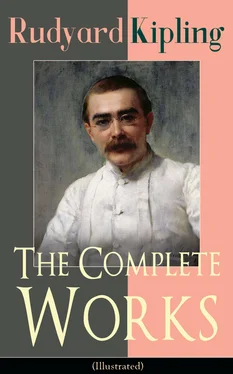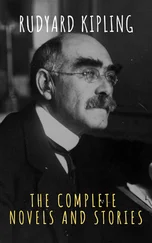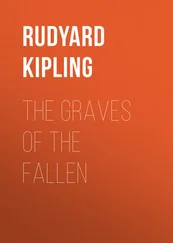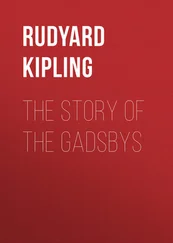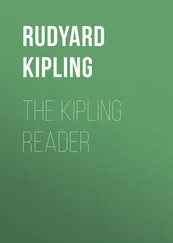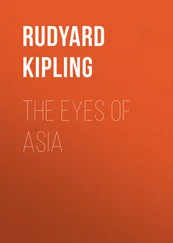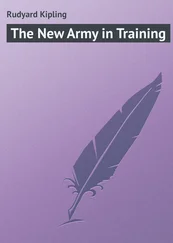‘Look here. If you want to be respectable you mustn’t smoke in the streets. Nobody does it.’ This is advice kindly tendered by a friend in a black coat. There is no Levée or Lieutenant-Governor in sight; but he wears the frock-coat because it is daylight, and he can be seen. He refrains from smoking for the same reason. He admits that Providence built the open air to be smoked in, but he says that ‘it isn’t the thing.’ This man has a brougham, a remarkably natty little pill-box with a curious wabble about the wheels. He steps into the brougham and puts on — a top-hat, a shiny black ‘plug.’
There was a man up-country once who owned a top-hat. He leased it to amateur theatrical companies for some seasons until the nap wore off. Then he threw it into a tree and wild bees hived in it. Men were wont to come and look at the hat, in its palmy days, for the sake of feeling homesick. It interested all the station, and died with two seers of babul -flower honey in its bosom. But top-hats are not intended to be worn in India. They are as sacred as home letters and old rose-buds. The friend cannot see this. He allows that if he stepped out of his brougham and walked about in the sunshine for ten minutes he would get a bad headache. In half an hour he would probably die of sunstroke. He allows all this, but he keeps to his Hat and cannot see why a barbarian is moved to inextinguishable laughter at the sight. Every one who owns a brougham and many people who hire ticca-gharris keep top-hats and black frock-coats. The effect is curious, and at first fills the beholder with surprise.
And now, ‘Let us see the handsome houses Where the wealthy nobles dwell.’ Northerly lies the great human jungle of the native city, stretching from Burra Bazar to Chitpore. That can keep. Southerly is the maidân and Chowringhi. ‘If you get out into the centre of the maidân you will understand why Calcutta is called the City of Palaces.’ The travelled American said so at the Great Eastern. There is a short tower, falsely called a ‘memorial,’ standing in a waste of soft, sour green. That is as good a place to get to as any other. The size of the maidân takes the heart out of any one accustomed to the ‘gardens’ of up-country, just as they say Newmarket Heath cows a horse accustomed to a more shut-in course. The huge level is studded with brazen statues of eminent gentlemen riding fretful horses on diabolically severe curbs. The expanse dwarfs the statues, dwarfs everything except the frontage of the far-away Chowringhi Road. It is big — it is impressive. There is no escaping the fact. They built houses in the old days when the rupee was two shillings and a penny. Those houses are three-storied, and ornamented with service-staircases like houses in the Hills. They are very close together, and they have garden walls of masonry pierced with a single gate. In their shut-upness they are British. In their spaciousness they are Oriental, but those service-staircases do not look healthy. We will form an amateur sanitary commission and call upon Chowringhi.
A first introduction to the Calcutta durwân or door-keeper is not nice. If he is chewing pân , he does not take the trouble to get rid of his quid. If he is sitting on his cot chewing sugar-cane, he does not think it worth his while to rise. He has to be taught those things, and he cannot understand why he should be reproved. Clearly he is a survival of a played-out system. Providence never intended that any native should be made a concierge more insolent than any of the French variety. The people of Calcutta put a man in a little lodge close to the gate of their house, in order that loafers may be turned away, and the houses protected from theft. The natural result is that the durwân treats everybody whom he does not know as a loafer, has an intimate and vendible knowledge of all the outgoings and incomings in that house, and controls, to a large extent, the nomination of the servants. They say that one of the estimable class is now suing a bank for about three lakhs of rupees. Up-country, a Lieutenant-Governor’s servant has to work for thirty years before he can retire on seventy thousand rupees of savings. The Calcutta durwân is a great institution. The head and front of his offence is that he will insist upon trying to talk English. How he protects the houses Calcutta only knows. He can be frightened out of his wits by severe speech, and is generally asleep in calling hours. If a rough round of visits be any guide, three times out of seven he is fragrant of drink. So much for the durwân . Now for the houses he guards.
Very pleasant is the sensation of being ushered into a pestiferously stablesome drawing-room. ‘Does this always happen?’ ‘No, not unless you shut up the room for some time; but if you open the shutters there are other smells. You see the stables and the servants’ quarters are close to.’ People pay five hundred a month for half a dozen rooms filled with scents of this kind. They make no complaint. When they think the honour of the city is at stake they say defiantly: ‘Yes, but you must remember we’re a metropolis. We are crowded here. We have no room. We aren’t like your little stations.’ Chowringhi is a stately place full of sumptuous houses, but it is best to look at it hastily. Stop to consider for a moment what the cramped compounds, the black soaked soil, the netted intricacies of the service-staircases, the packed stables, the seethment of human life round the durwâns’ lodges, and the curious arrangement of little open drains mean, and you will call it a whited sepulchre.
Men living in expensive tenements suffer from chronic sore throat, and will tell you cheerily that ‘we’ve got typhoid in Calcutta now.’ Is the pest ever out of it? Everything seems to be built with a view to its comfort. It can lodge comfortably on roofs, climb along from the gutter-pipe to piazza, or rise from sink to verandah and thence to the topmost story. But Calcutta says that all is sound and produces figures to prove it; at the same time admitting that healthy cut flesh will not readily heal. Further evidence may be dispensed with.
Here come pouring down Park Street on the maiden a rush of broughams, neat buggies, the lightest of gigs, trim office brownberrys, shining victorias, and a sprinkling of veritable hansom cabs. In the broughams sit men in top-hats. In the other carts, young men, all very much alike, and all immaculately turned out. A fresh stream from Chowringhi joins the Park Street detachment, and the two together stream away across the maidân toward the business quarter of the city. This is Calcutta going to office — the civilians to the Government Buildings and the young men to their firms and their blocks and their wharves Here one sees that Calcutta has the best turn-out in the Empire. Horses and traps alike are enviably perfect, and — mark the touchstone of civilisation — the lamps are in their sockets! The countrybred is a rare beast here; his place is taken by the Waler, and the Waler, though a ruffian at heart, can be made to look like a gentleman. It would be indecorous to applaud the winking harness, the perfectly lacquered panels, and the liveried saises . They show well in the outwardly fair roads shadowed by the Palaces.
How many sections of the complex society of the place do the carts carry? First , the Bengal Civilian who goes to Writers’ Buildings and sits in a perfect office and speaks flippantly of ‘sending things into India,’ meaning thereby he refers matters to the Supreme Government. He is a great person, and his mouth is full of promotion-and-appointment ‘shop.’ Generally he is referred to as a ‘rising man.’ Calcutta seems full of ‘rising men.’ Secondly , the Government of India man, who wears a familiar Simla face, rents a flat when he is not up in the Hills, and is rational on the subject of the drawbacks of Calcutta. Thirdly , the man of the ‘firms,’ the pure non-official who fights under the banner of one of the great houses of the City, or for his own hand in a neat office, or dashes about Clive Street in a brougham doing ‘share work’ or something of the kind. He fears not ‘Bengal,’ nor regards he ‘India.’ He swears impartially at both when their actions interfere with his operations. His ‘shop’ is quite unintelligible. He is like the English city man with the chill off, lives well and entertains hospitably. In the old days he was greater than he is now, but still he bulks large. He is rational in so far that he will help the abuse of the Municipality, but womanish in his insistence on the excellences of Calcutta. Over and above these who are hurrying to work are the various brigades, squads, and detachments of the other interests. But they are sets and not sections, and revolve round Belvedere, Government House, and Fort William. Simla and Darjeeling claim them in the hot weather. Let them go. They wear top-hats and frock-coats.
Читать дальше
